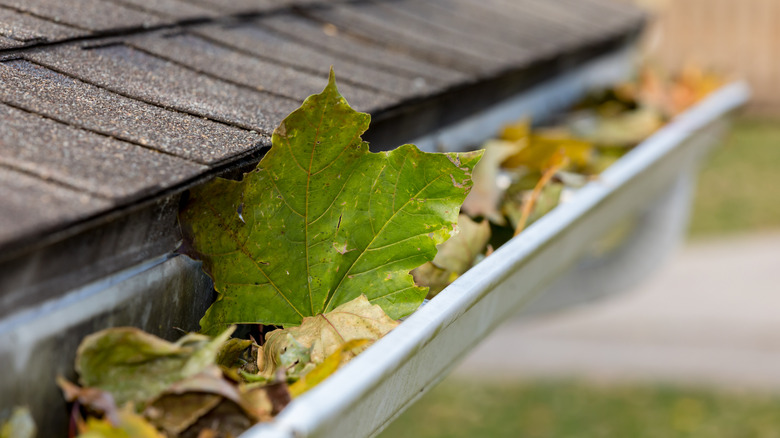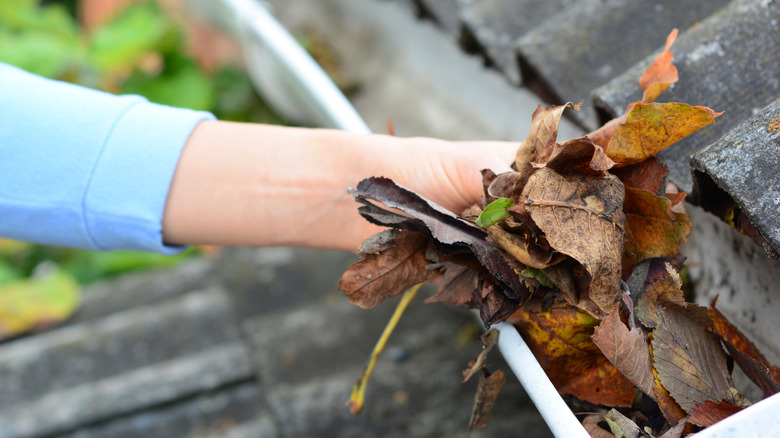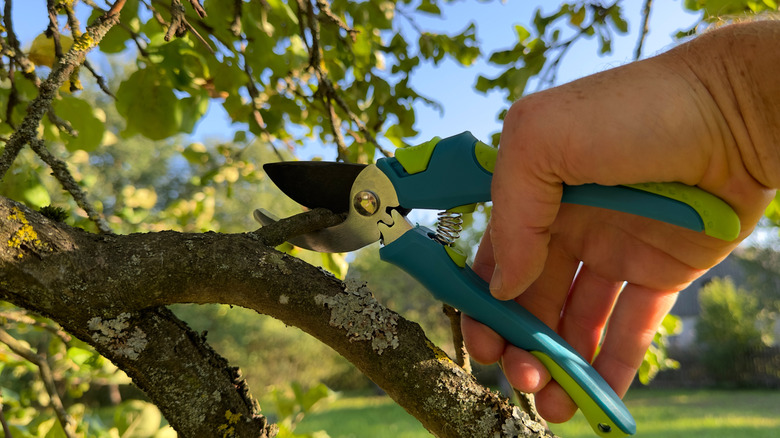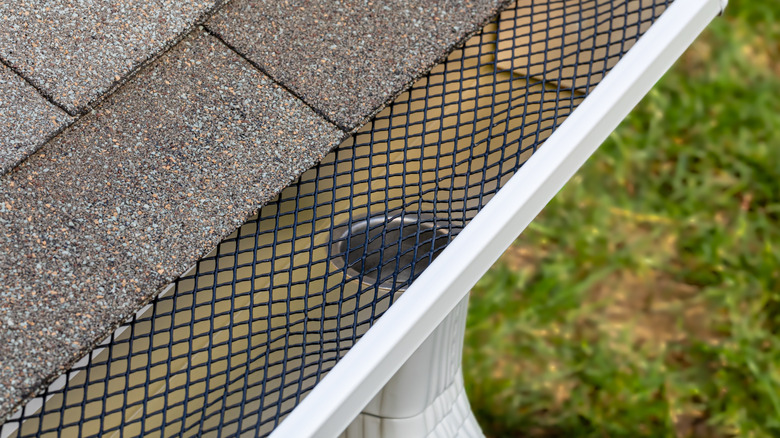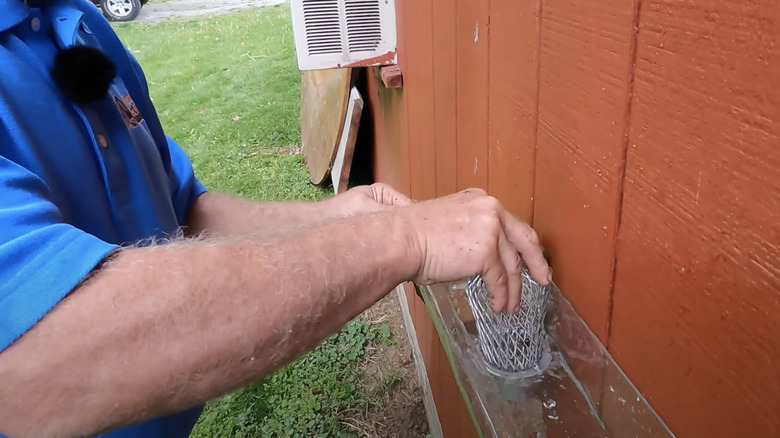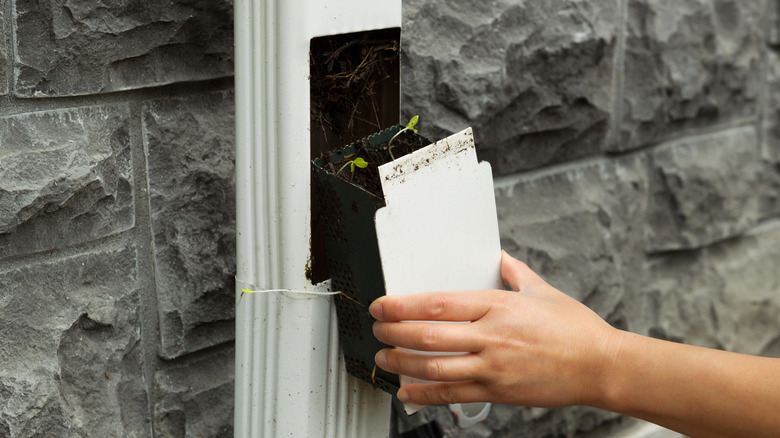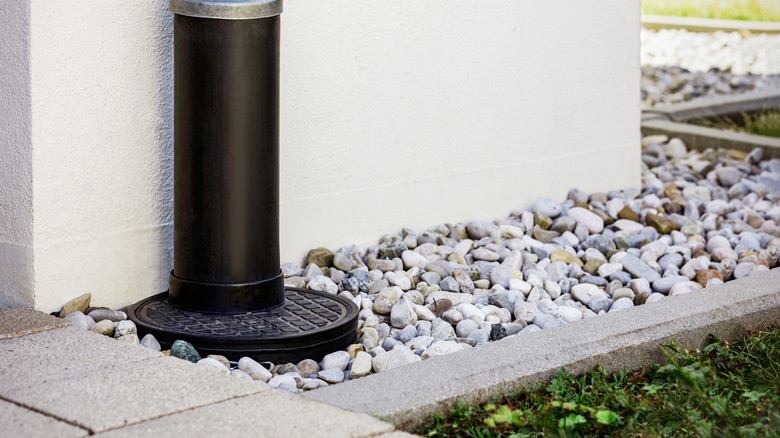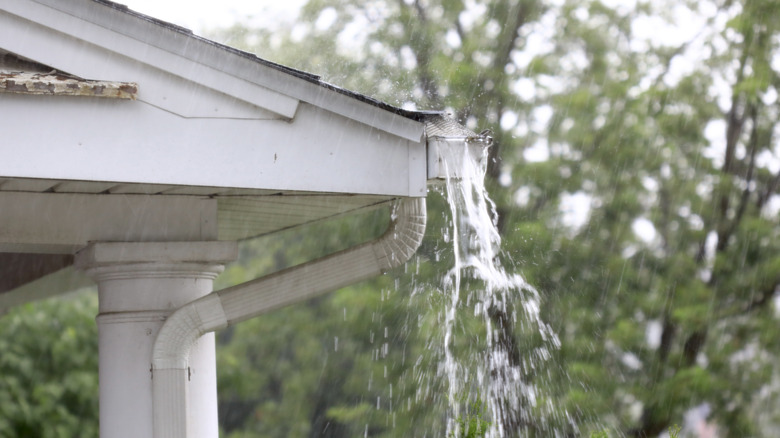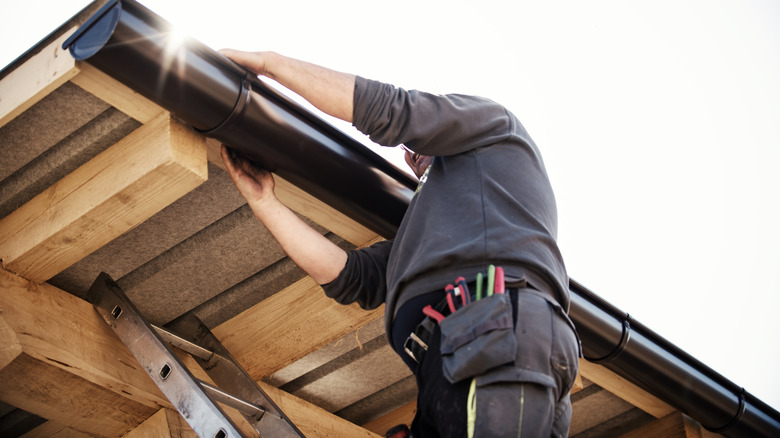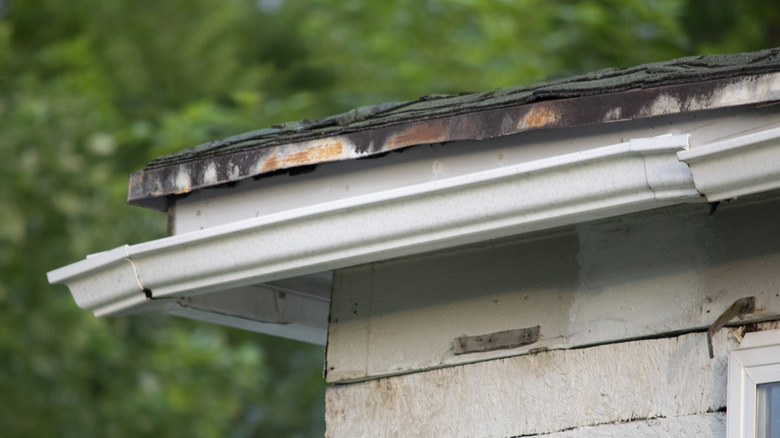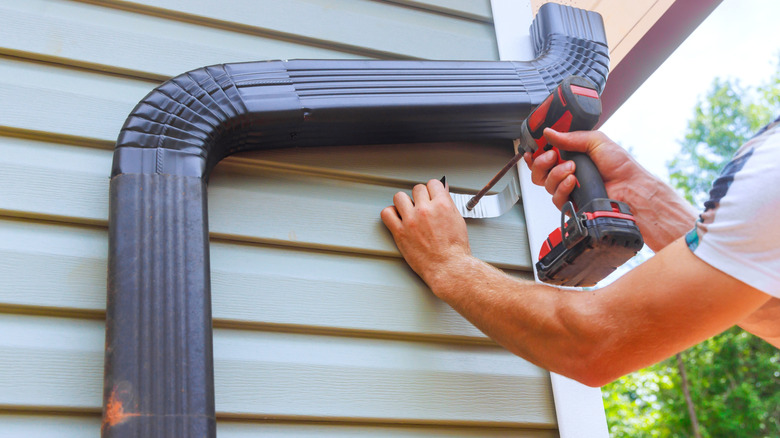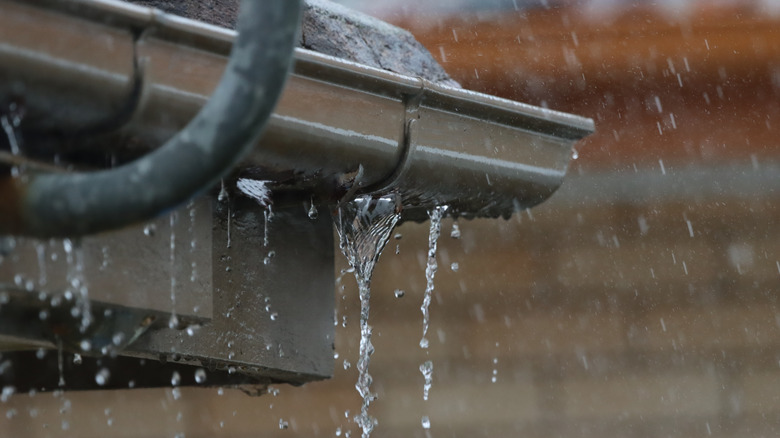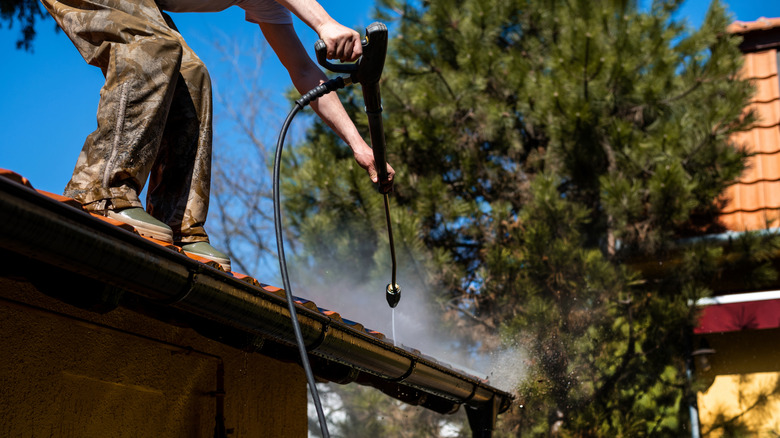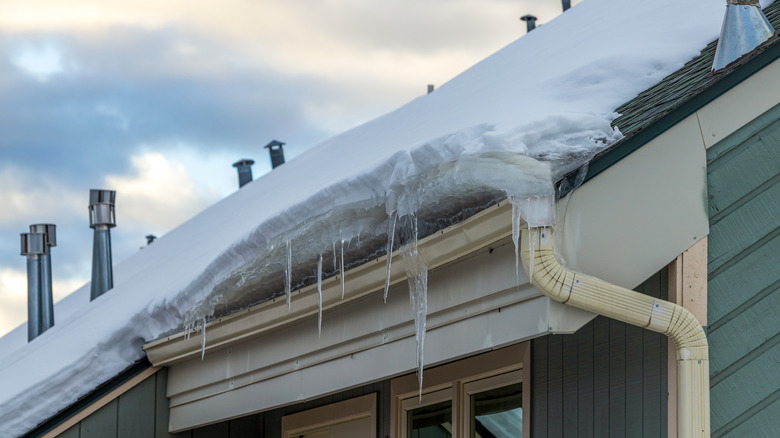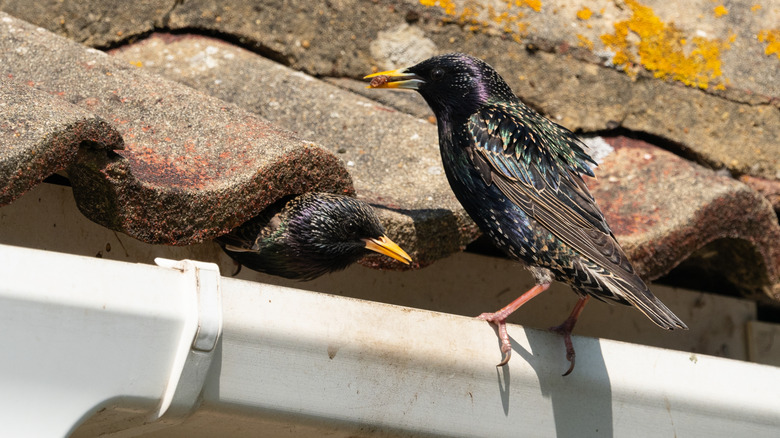16 Tips To Keep Your Gutters Unclogged & Clear Of Falling Leaves
As fall starts to roll in, the foliage will change colors and begin to drop from the trees. While this is beautiful to watch, it can become problematic for your gutters. Too many leaves falling into your home's drainage system will clog your gutters, downspout, or underground drain lines. When your gutters become overwhelmed with clogs, they won't drain water away from your home properly and this could lead to water damage.
At this time of year, it's vital to maintain your drainage system to avoid issues with clogging that could lead to bigger problems later. Overflowing and leaking gutters can eventually cause roof leaks, issues with the foundation, flooding in your basement, structural problems, and erosion of the soil around your house. Cleaning out your drainage system may be an annoying chore, but neglecting your gutters does more harm than you think. Rather than waiting for a clog to form and fixing it, there are several preventative measures you can take to keep your gutters clear and flowing easily.
Don't forget to clean your gutters often
Regularly maintaining your gutters is one of the best ways to prevent clogs in your system. While cleaning your gutters twice annually is usually sufficient, the number of times a year you should be clearing your gutters may increase if there are more trees around your home. Manually cleaning the leaves and gunk out of your gutters can be hard work, but it's a crucial step in preventing clogs.
While some use their hands to pull the leaves from gutter pipes, you may also consider a specific gutter scoop, which is made to easily fit in the tight space and pull out debris. Alternatively, a wet and dry vacuum can suck the leaves right out of your pipes or downspout after you've removed some of the water. For those who struggle to stand on a ladder, extendable gutter cleaning wands can be an extremely helpful tool. These fasten onto your hose and use water to push the leaves out of your gutter. You can also use your hose after manually clearing the gutter to wash away any remaining pieces; however, strong pressure washers may damage gutters and should be avoided or used very carefully.
Trim tree branches hanging over your roof or near your gutter
Trees are gorgeous landscape additions, but their falling leaves become a nuisance for your gutters. By trimming the branches directly over your roof or near your gutters, you can eliminate some of the debris before it gets into your drainage. This is a simple way to keep debris out of your gutters and prevent clogs from forming. It's crucial to only cut off smaller branches yourself, as larger hanging limbs could damage your roof if they fall. These can be cut down by professionals, if necessary.
When trimming your tree, ensure you don't chop off a lot of branches at one time, as this can be harmful to the plant. You shouldn't be removing more than about 15% of the tree at one time. Depending on the thickness of the branches, pruning shears or lopping shears should get the job done; however, very thick tree limbs may require a saw. By keeping your trees a little further away from your roof, you can stop as much debris from clogging up your gutter.
Invest in gutter guards
Even when you clean your gutters and trim nearby trees, leaves and debris can still plague your drainage system. Luckily, gutter guards can be installed onto your pipes and keep the leaves and other junk out. Foam wedges, wire mesh screens, and curved hood gutter guards are all super effective for preventing clogs, because they block most of the debris from ever entering your pipes. When choosing a guard, look for what will fit your specific gutters best. If you pick a wire option, check that the mesh is large enough to allow water to flow through easily.
Gutter guards are a great line of defense against clogs, but they come with their own maintenance. Additionally, you should still clean your gutters even with gutter guards, because leaves often become stuck in the mesh or debris will lay on top of them. Additionally, hooded guards sometimes struggle to keep up during strong rainstorms. Despite this, gutter guards are a great investment to keep clogs at bay.
Install a downspout strainer on your roof
For those that need a quick, affordable option, downspout strainers are a great choice. These cylindrical or round mesh frames pop into the gutter outlet that leads into your downspout, and catch leaves before they move further into your drainage system. This is extremely helpful to prevent clogs in the downspout and any drain pipes beneath it, as the debris can't reach these areas. Because of their shape, the leaves should flow around the strainer, though some may get stuck to it. In just a few minutes, and at a cost of only around $3, you can install a downspout strainer and stop worrying about clogs.
While strainers are very inexpensive and simple to install, they will sometimes become covered in debris, similar to the mesh gutter guards. This can block water from flowing into the downspout correctly, which could cause your gutters to overflow. Cleaning off your strainer regularly will help to keep everything running smoothly.
A downspout filter is easy to empty and conveniently traps leaves
Gutter filters, also known as leaf traps, are very similar to strainers, but rather than blocking the leaves at top of the downspout, they trap the debris inside. While they are harder to install, filters will handle more debris than strainers and can be placed in areas that are easier to reach and empty. Your filter can be installed basically anywhere on the downspout, aside from the very top. Now, you'll be able to clear the leaves from your gutter system without having to climb onto the roof.
Unlike the gutter strainers, you'll likely have to cut your downspout to install a leaf trap. Depending on the filter, a section from the front of the pipe will need to be removed to fit it. Alternatively, the bottom of the downspout may need to be fully severed, so that a filter can be placed in between the two pieces of the pipe. Gutter filters need to be cleared often to prevent them from getting too full and putting unnecessary stress on the downspout.
Add a drain guard directly under the downspout to protect underground pipes
If you've had issues with clogs occurring in the underground pipe directly beneath the downspout, installing a filter or guard here can stop foliage from going further into the drainage system. Instead of installing a filter in the middle of the downspout, put it at the bottom outlet. You could also use a leaf trap to make it easy to remove the debris.
Since removing clogs is a bit more difficult once they reach your underground drainage, this method ensures the leaves falling onto your roof won't make it that far. You'll likely need to remove the debris from these filters often, though you won't have to get onto the roof. While these filters will probably hold more than a strainer, they are a bit more difficult to install. By trapping the leaves, twigs, and pine needles before they reach the underground pipe, you can save yourself from a frustrating clog.
Check on your gutters after big storms
During large storms, lots of heavy rainfall can flush your gutter system with debris quickly, causing clogs or backups. Strong winds during storms can also move debris from other places or knock leaves off the trees in your yard, adding even more leaves and junk in your gutters than normal. Checking on your gutters within a few days after a big storm and clearing away any fallen leaves are crucial steps in preventing clogs.
Intense winds can also loosen your gutters from your house, and it's a good idea to inspect your drainage to ensure none of the pipes are sagging or damaged after bad weather. If you know a storm is coming and have a little time, you may be able to prepare your gutters. Consider adding supports to weaker areas of the pipes and cleaning out any debris before the storm arrives. This can help your gutters have the space and capacity to handle the heavy rain and wind.
Remember to inspect your roof
While falling leaves contribute to gutter clogs, roofing material stuck in the pipes is another common problem. As your roof ages and wears, shingles may begin to break or fall off entirely and end up in your drainage system. Not only will this material cause a blockage on its own, but it can trap smaller debris like twigs and leaves behind it, creating a large clog. Having your roof inspected every so often allows you to keep it in good condition and prevent loose shingles from falling and backing up your gutters.
If you notice that little pieces of tar, nails, or shingles are ending up in your gutters, the solution could either be very simple or somewhat complicated. In some cases, you can repair loose shingles or quickly replace them to solve the problem. For more extensive roof issues, you may need to contact a professional.
Consider realigning your gutters for a better slope
Gutters should have a slight slope toward the downspout to allow the water to flow easily. When there's not enough of a slope, the fluid can accumulate in some spots. Over time, this can also trap debris and create clogs in your system. The weight of the water may also start to damage your pipes, causing them to droop. Leaks in the corners of your gutters and rust forming can also be signs that your sloping is incorrect.
The slope of your gutters should be approximately ¼ inch for every 10 feet, and if they're not, you'll want to realign them. Sometimes, an even larger slope is needed, depending on your situation. To ensure that rainwater is flowing smoothly to your downspout and out of it, you may need to take your gutters down and reinstall them at the correct angles. Though it requires some maintenance, realigning the slope of your gutter can save you from clogs and keep your gutters in good condition.
Reinforce areas of your gutter that are drooping
If portions of your pipes have already started to sag, bend, or shift, you're at a risk for water pooling and clogs, as well as messing up your alignment. Take a look at your gutters to see if any parts are hanging lower than the rest. These areas may need to have supports added to keep them from drooping and to help the water and fallen leaves to reach the downspout more efficiently.
Once you've cleaned the gutters and assessed the severity of the sagging without the weight of water and debris, you can decide whether to repair or replace your pipes. If your gutters are just a bit loose or drooping a little, try reinforcing the hangers that hold your drainage system onto your house. If these pieces are damaged, you can install new fasteners; however, when pipes are very bent or damaged, they may need to be totally replaced.
Upgrade to a larger drainage system
When heavy rainfall is beating against your roof, you may wonder if your gutters are big enough to handle a storm. Drainage systems that are consistently being overwhelmed will have ongoing issues with clogging, because there's just not enough room for all of the water, leaves, and twigs to pass. When you know your sloping is correct and yet you're cleaning your gutters constantly, this could indicate that you need larger gutters. Frequent overflowing can also suggest that your system can't keep up with the demand.
For those that constantly struggle with their gutters overflowing and backing up, installing a larger downspout that still fits into your current gutters could help. Alternatively, you might add an extra downspout or put in wider gutters, depending on your needs and budget. With larger pipes, the water and debris will have more space to move through your drainage system without getting stuck and forming frustrating clogs.
Check for gutter leaks and repair them promptly
Leaking gutters and downspouts can often indicate that your system is experiencing a clog somewhere. Additionally, water leaking out of your system means it's not flowing properly, which affects how debris moves through your gutters. While clogs may not always be the cause of a leak, it's important to inspect your pipes for areas where water is seeping out. Looking at the leaks helps you determine why they're happening and lets you repair the problem. Sometimes, just cleaning out the leaves will stop your gutters from leaking or overflowing.
If you've scooped all the gunk out of your gutters and the leak persists, you may have to repair the area. Butyl rubber caulk is a great gutter sealant that can help fill holes or cracks in the seam or joint of your pipe. With larger holes in your pipes, metal patches will cover them and stop the leak. Repairing gutter hangers, so that the pipes are firmly in place, can also aid in stopping leaks.
Have your gutters serviced by a professional
For those that struggle to climb a ladder or have gutters that are difficult or dangerous to access, hiring a professional to inspect and maintain your drainage system is a fantastic option. A professional is also helpful when you have perpetual clogs and need help determining how to remedy the issue. Plumbers will have a variety of tools, such as cameras or gutter vacuums, that can deal with more complex problems.
Clogs occurring in portions of the downspout that are buried in your yard are much harder to clear yourself, and getting help from a professional will make the job simple. If you despise the chore of maintaining your gutters, but don't want to hire a plumber twice a year, you might simply clean your gutters in the spring and have them serviced in the fall, or vice versa. Even if you DIY most of your gutter care, enlisting a professional may be necessary every once in a while.
Prevent ice dams from clogging up your gutter and trapping leaves
Those that live in areas with bitter winters could struggle with ice forming in their gutters. Though it's not fallen leaves, ice dams will still clog your pipes and end up trapping other debris and water with them, exacerbating the blockage. The heavy ice and weight from accumulated water and leaves can also harm your gutters and stop your drainage system from working, leading to water damage around your home.
To stop ice dams from forming and keep your gutter clear during harsh winter weather, consider adding heated panels or cables to your gutters. Additionally, ensuring that your attic is insulated correctly and removing snow from your roof, rather than letting it melt, will also help prevent your drainage from freezing. Hot water can be used in a pinch to melt ice dams, but this needs to be done slowly and carefully. For severe freezes, contacting a professional to melt the ice with a steamer may be the best option.
Deter birds and other pests from building nests in your gutters
While it's wonderful to watch the wildlife in your yard, it becomes a nuisance when squirrels and birds decide to build their nests in your gutters, and subsequently clog them. Animals, particularly birds, can be attracted to your gutters because of the water and shelter they provide. Small birds can get protection from predators, and sticks flowing through your drainage system are perfect building materials for their nests. This is why gutters that are already clogged may be extremely attractive to birds, making the blockage worse. Because nests will create new clogs and could end up harming your system, it's crucial to keep birds from nesting in unwanted areas around your home.
Before removing a bird nest, check local laws to ensure it's safe and legal. Typically, active nests shouldn't be disturbed. Keeping your gutters clean makes the area less attractive to wildlife, but you may need to take further measures to keep birds out. Gutter guards and covers can block birds from building nests in your drainage. Additionally, setting up predator decoys, such as hawks or owls, can scare birds away from your home.
Prioritize planting trees that drop fewer leaves
Besides taking immediate action to prevent gutter clogs, you can also plan your landscaping to avoid trees that are more prone to shedding. Deciduous trees, such as maple, sweetgum, and poplar trees, often lose all of their leaves in the autumn and can cover your roof in more debris. If you're thinking of adding new trees to your yard, consider options that don't drop as many leaves or that aren't as tall. Additionally, the leaves of some trees may be thinner and will flow through your drainage system better, and could be a good choice for keeping fallen leaves out of your gutters.
Surprisingly, some types of beech and oak trees are known to keep their leaves through the winter, despite being deciduous. Though the leaves are dead, they continue to hang onto the branches in a phenomenon known as marcescence. These trees will still lose some leaves during the spring as new ones grow. Alternatively, planting medium or smaller sized trees, such as Japanese maple, dogwood, or red bud trees, that don't shed too much will help keep the foliage on your roof and in your gutters to a minimum. Planting larger trees farther away from your home will also prevent branches from hanging over your roof and dropping leaves directly into your drainage system.
